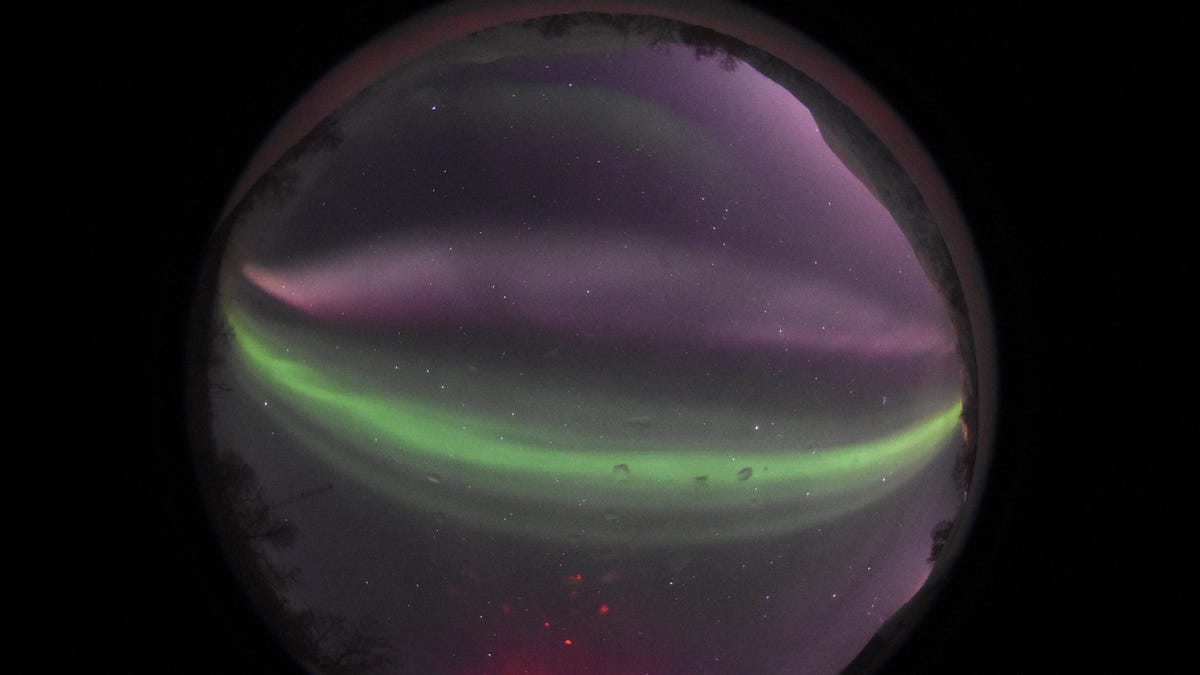STEVE, a strange ribbon of purple and green haze discovered by citizen scientists in 2016, just got even weirder. While looking through archival data, a team of scientists discovered that the aurora-like phenomenon has a secret twin moving in the opposite direction.
A photo of STEVE’s long-lost sibling hanging out above the Norwegian Arctic was found in the archives of the all-sky digital camera at the Ramfjordmoen Research Station in Norway, according to a new study published in Earth, Planets and Space.
Strong Thermal Emission Velocity Enhancement, also known as STEVE, was first spotted in photos on the Aurora Chasers Facebook group, appearing as unusual purple streaks in the night sky. The name STEVE was chosen in honor of the children’s movie Over the Hedge, in which a character randomly comes up with the name STEVE to describe an object he’s not sure about. STEVE’s full name was later put together to fit its acronym.
Although it can appear around the same time as the northern lights, its distinct colors didn’t match the shades of green, blue, and red normally seen in the auroras. The auroras also tend to last for hours, while STEVE graces the skies for a short period of time.
Scientists were naturally intrigued, so they began investigating the strange aurora-like phenomenon. Upon closer inspection, STEVE was categorized as a fast-moving stream of extremely hot gas called a sub-auroral ion drift.
Auroras form as a result of solar wind hurling particles towards Earth, which are then guided by the planet’s magnetic field towards the north and south poles. The particles collide with atoms and molecules in the upper atmosphere, resulting in the shimmery green light that takes over the night sky.
STEVE is triggered by the same process, but it travels along different magnetic field lines. As a result, it can appear at much lower latitudes. The strangeness of STEVE, however, doesn’t end there. The aurora-like phenomenon appears at dusk when the stream of hot gas moves westward. Scientists have always wondered if STEVE could have an eastward moving twin that would appear at dawn.
That’s when an international team of researchers got to digging through archival data, searching through images of auroras captured by Ramfjordmoen Research Station’s all-sky digital camera with the help of citizen scientists. Similar to the discovery of STEVE itself, it was citizen scientist Gabriel Arne Hofstra who found a STEVE-look-alike in an image taken on December 28, 2021.
“It has been amazing to have contributed to new science and help scientists uncover this phenomena,” Hofstra said in a statement. “To me it proves that we citizens can contribute to understanding the world we live in by collaborating with scientists.”
STEVE’s twin formed an arch that stretched more than 600 miles across (1,000 kilometers), appearing just after midnight poleward of the green aurora, which could also be seen in the image.
Aside from their physical similarities, the European Space Agency (ESA) also used its trio of Swarm satellites to collect data on the magnetic field during the time the image of STEVE’s twin was captured. Although none of the satellites flew directly through the arc at the same time and place observed in the all-sky image, two of them did measure the conditions in the purple region before, during, and after the event. From the data, scientists were able to trace an eastward ion flow in the purple region.
As we continue to gaze at the night sky, phenomena like STEVE remind us that there’s always more to discover beyond the visible. With each new finding, both scientists and citizen observers bring us closer to unraveling the mysteries of our amazing planet.
More: 25 Spellbinding Photos of the Northern Lights

Dr. Thomas Hughes is a UK-based scientist and science communicator who makes complex topics accessible to readers. His articles explore breakthroughs in various scientific disciplines, from space exploration to cutting-edge research.







